Hoo Fan Chon is a visual arts practitioner based in George Town, Penang. His research-driven projects are often set in local geographies and concern class aspiration, cultural identity, informal histories, and colonial legacy.
︎ email ︎ cv
✺ 2025 ✺ 2024 ✺ 2023 ✺ 2022 ✺ 2021 ✺ 2020 ✺ 2019 ✺ 2018 ✺ older works ✺ photography ✺ video ✺ painting ✺ sculpture ✺ installation ✺ writing ✺ george town ✺ archive ✺ fish ✺ durian ✺ badminton ✺
︎ email ︎ cv
✺ 2025 ✺ 2024 ✺ 2023 ✺ 2022 ✺ 2021 ✺ 2020 ✺ 2019 ✺ 2018 ✺ older works ✺ photography ✺ video ✺ painting ✺ sculpture ✺ installation ✺ writing ✺ george town ✺ archive ✺ fish ✺ durian ✺ badminton ✺
Familiar Strangers

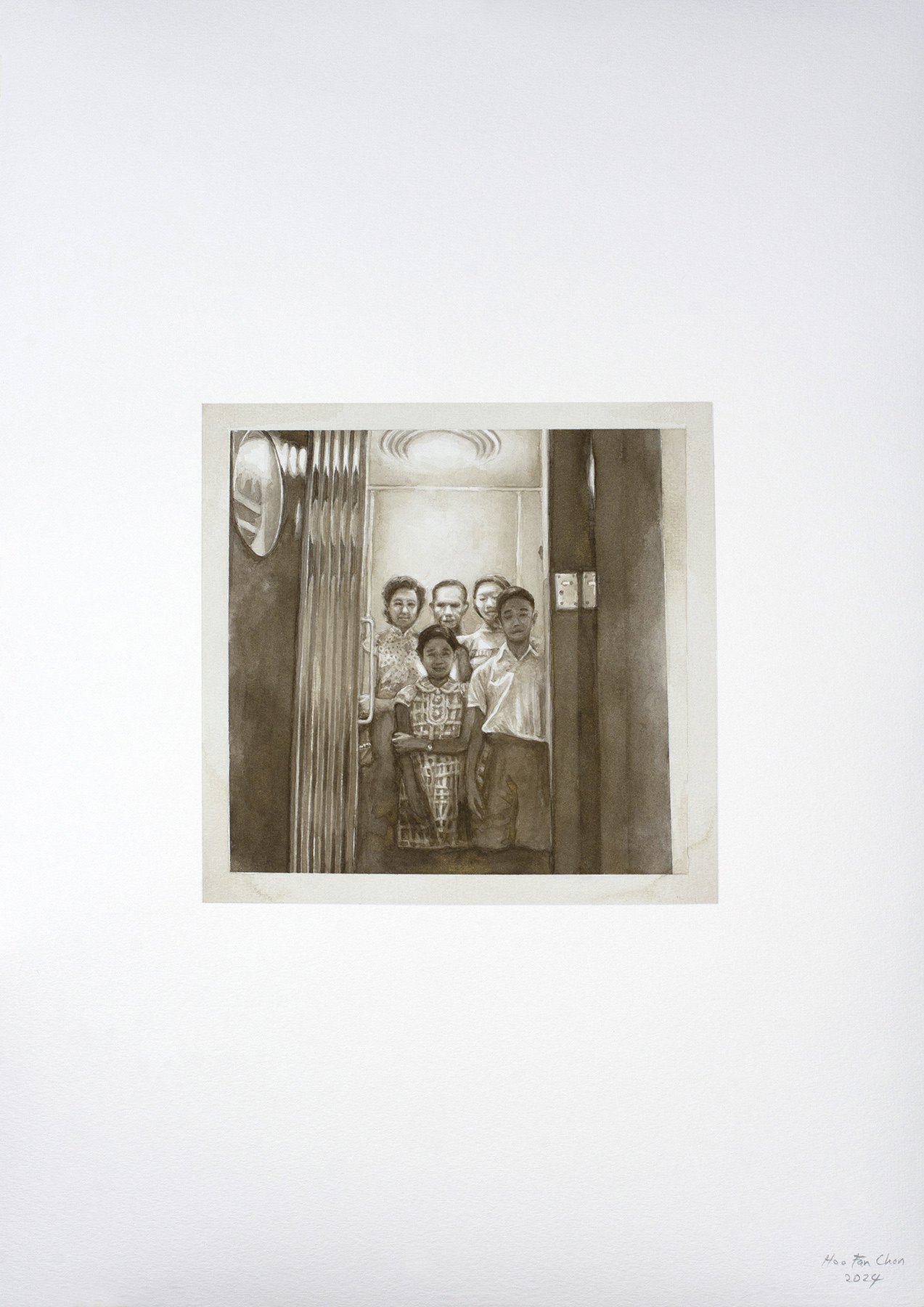

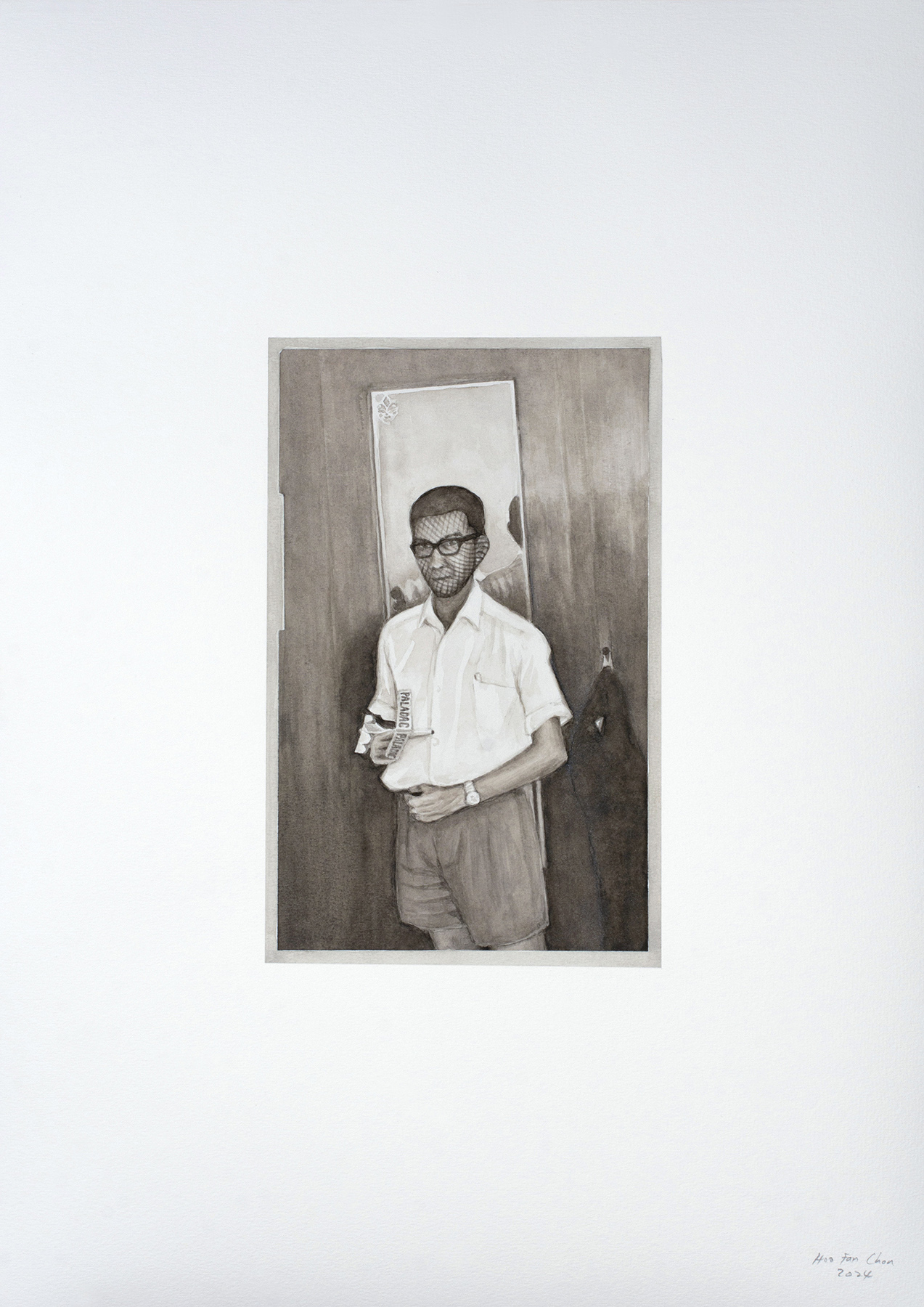

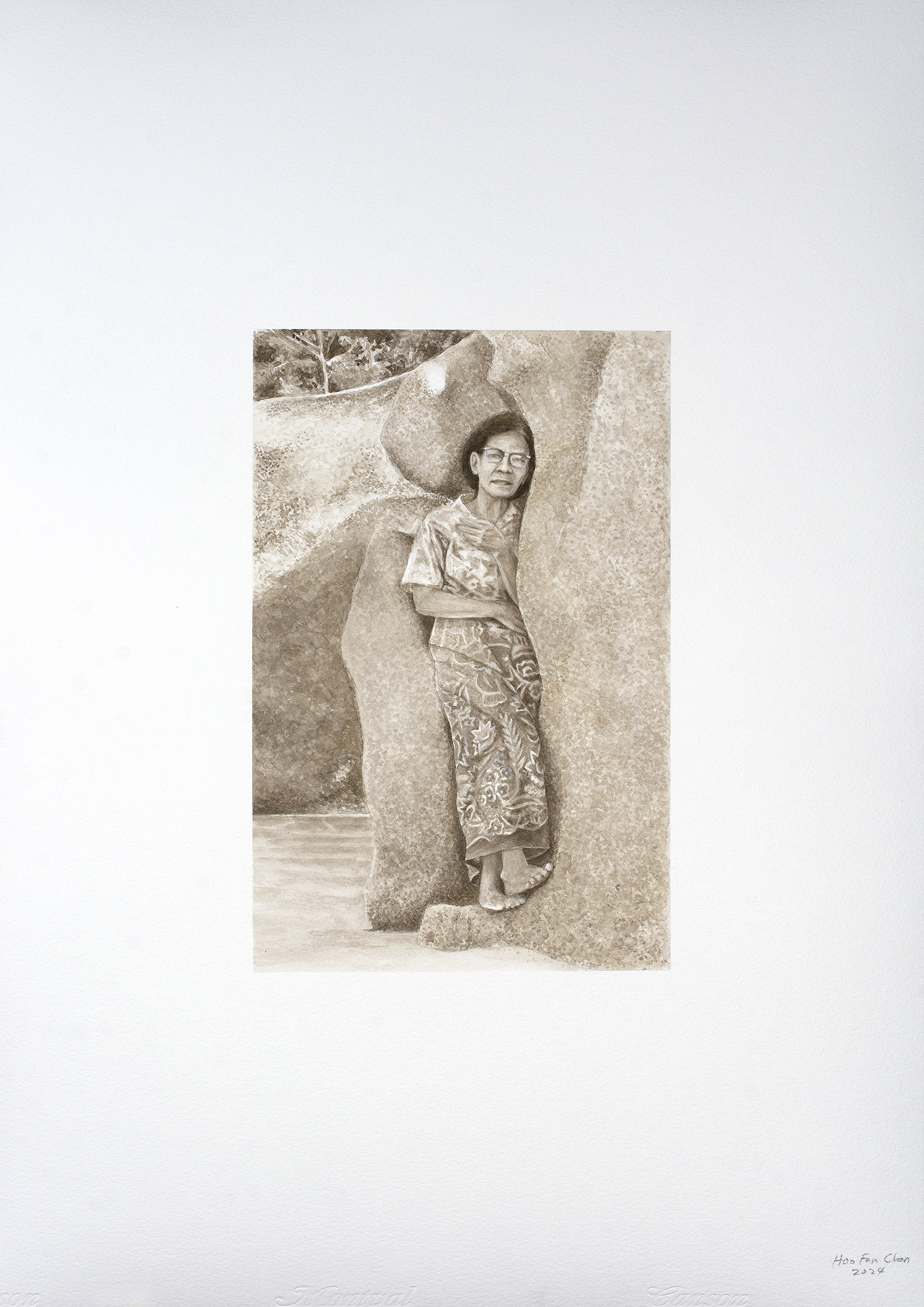



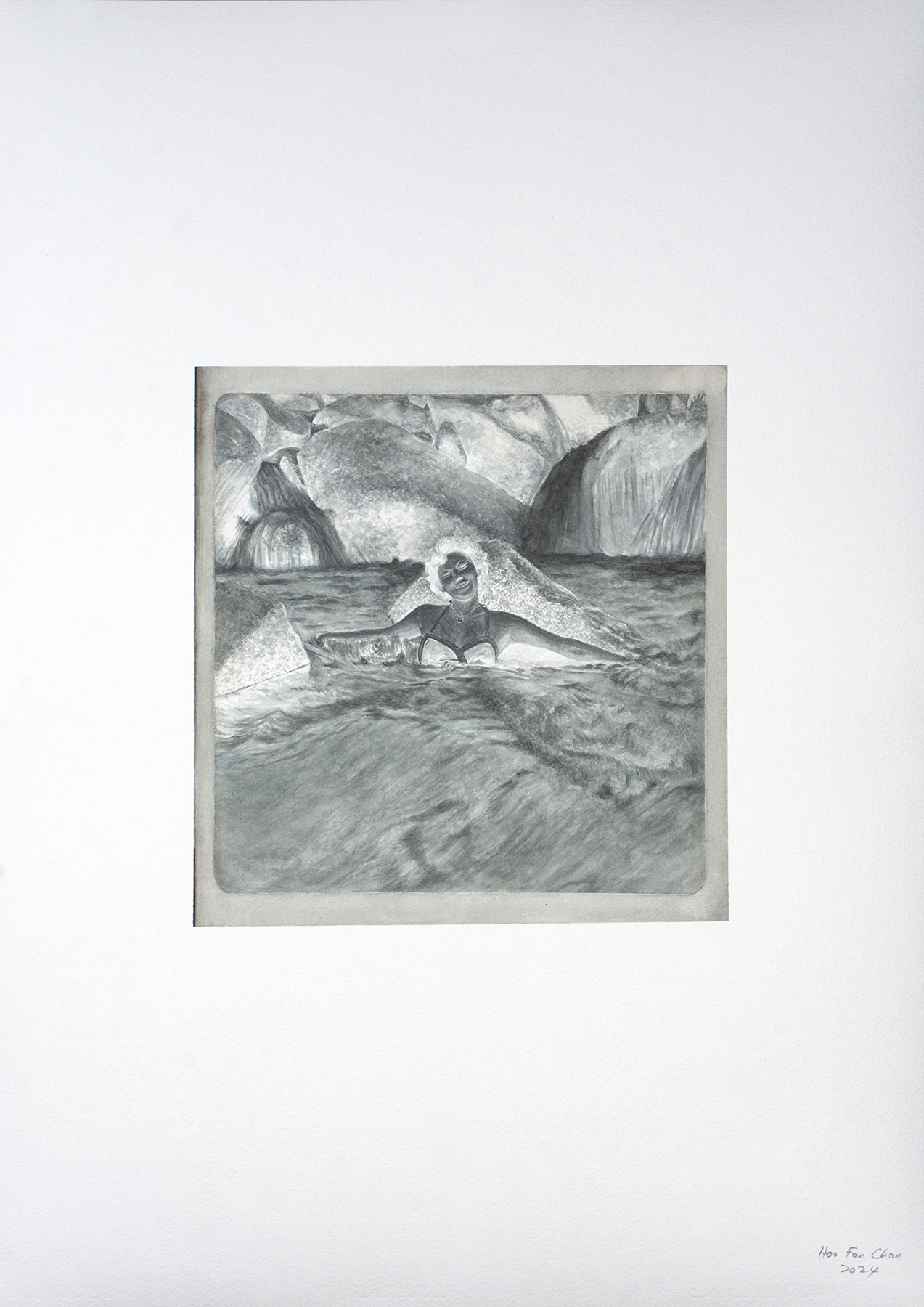

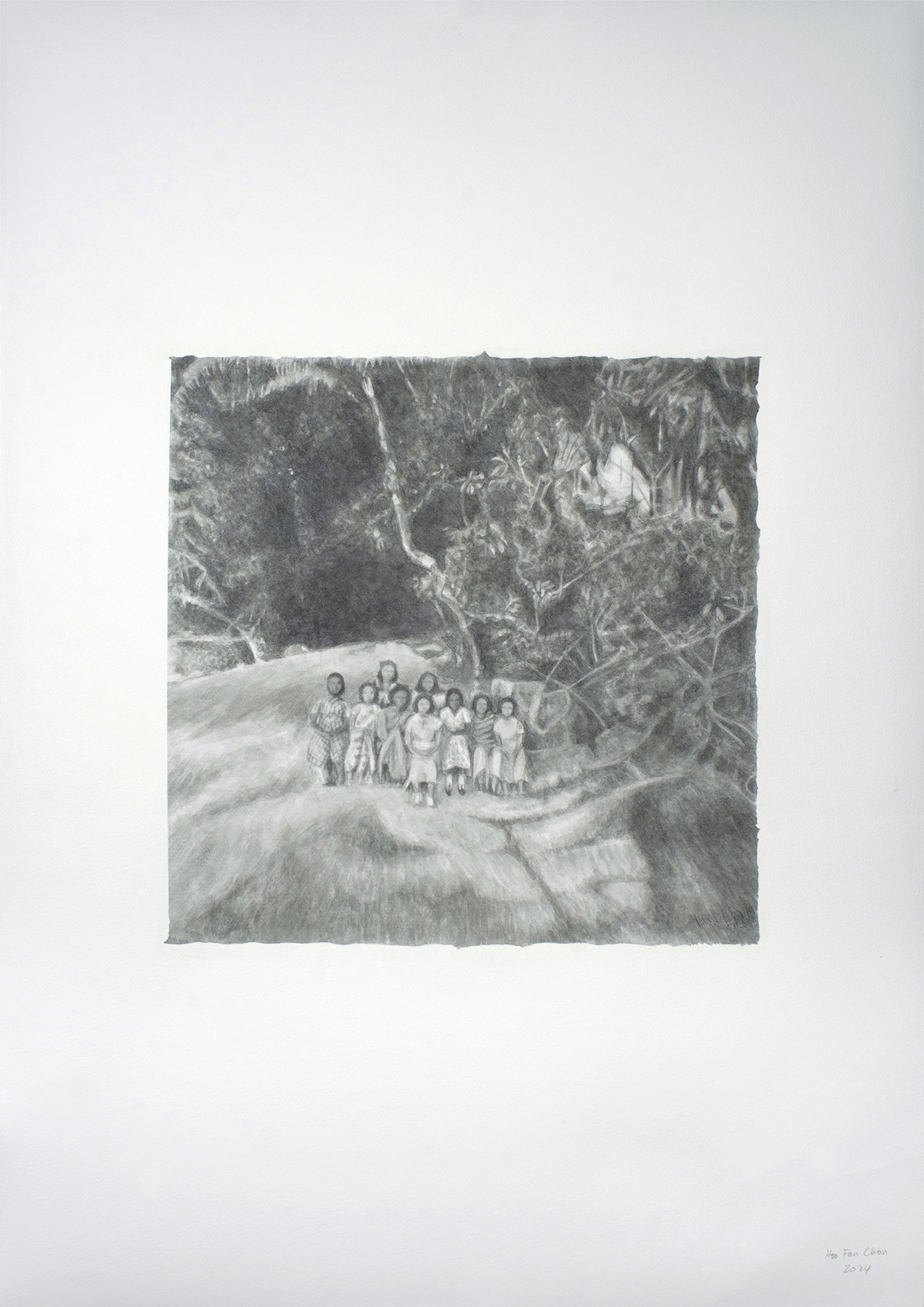
S.E.A. Focus 2025
Tanjong Pagar Distripark;
organised by The Back Room KL
Watercolour on 300 gsm acid-free paper, 42 x 59.4 cm each except for 'Topless Man (interior)' & 'Picnic at The Moonlight Bay' which are 59.4 x 84.1 cm each, 2024
Tanjong Pagar Distripark;
organised by The Back Room KL
︎
Watercolour on 300 gsm acid-free paper, 42 x 59.4 cm each except for 'Topless Man (interior)' & 'Picnic at The Moonlight Bay' which are 59.4 x 84.1 cm each, 2024
‘Familiar Strangers’ is a series of watercolour paintings based on found photographs collected from around antique shops and flea markets in George Town, Penang. I have a habit of visiting these markets and collecting old photographs, particularly photographs where I don’t always immediately understand the content or context, or photographs that look slightly odd.
Since its designation as a joint UNESCO World Heritage site, both the state of Penang and local businesses have promoted George Town as a popular destination for cultural tourism. This branding exercise has stimulated a trade in nostalgia, particularly manifested in the recycling of found objects as novel souvenirs for tourists or interior decoration for business owners.
Other than looking at the typical photographs we see in antique stores that feature social rites (such as weddings, birthdays, funerals, etc.) or the prized Peranakan family studio portraits, I am more interested in the anonymous, amateur everyday candids that are sometimes awkwardly posed, performative, blown out, underexposed, or in soft focus. I am intrigued by how these time-eroded personal keepsakes, nibbled away by silverfish, ended up being recirculated. Reading these photographs is an act of narrating everyday histories, even if they have to be excavated from other people’s staged realities, through lenses both voyeuristic and literal.
If photographing is an act of appropriating the subject being photographed, then painting a photograph is to look at a photograph intently, like studying a map of unfamiliar routes, to familiarise oneself with a foreign image. I blow up these photographs by tracing the original image through layers of watercolour paintings. Painting can sometimes be described as photographic and photography as painterly; this series of works intends to combine both the representational function of a painting and the mimetic nature of a camera to put together an album of anonymous and discarded memories.
Since its designation as a joint UNESCO World Heritage site, both the state of Penang and local businesses have promoted George Town as a popular destination for cultural tourism. This branding exercise has stimulated a trade in nostalgia, particularly manifested in the recycling of found objects as novel souvenirs for tourists or interior decoration for business owners.
Other than looking at the typical photographs we see in antique stores that feature social rites (such as weddings, birthdays, funerals, etc.) or the prized Peranakan family studio portraits, I am more interested in the anonymous, amateur everyday candids that are sometimes awkwardly posed, performative, blown out, underexposed, or in soft focus. I am intrigued by how these time-eroded personal keepsakes, nibbled away by silverfish, ended up being recirculated. Reading these photographs is an act of narrating everyday histories, even if they have to be excavated from other people’s staged realities, through lenses both voyeuristic and literal.
If photographing is an act of appropriating the subject being photographed, then painting a photograph is to look at a photograph intently, like studying a map of unfamiliar routes, to familiarise oneself with a foreign image. I blow up these photographs by tracing the original image through layers of watercolour paintings. Painting can sometimes be described as photographic and photography as painterly; this series of works intends to combine both the representational function of a painting and the mimetic nature of a camera to put together an album of anonymous and discarded memories.